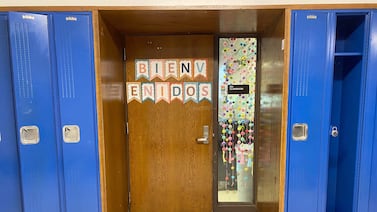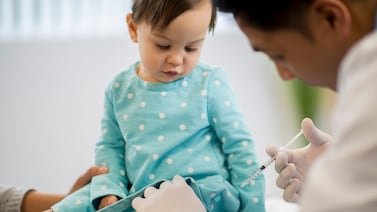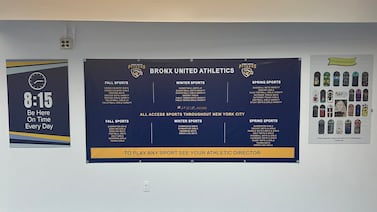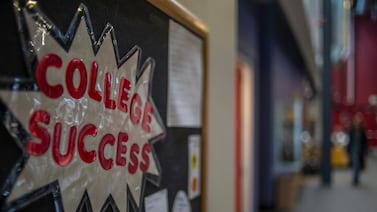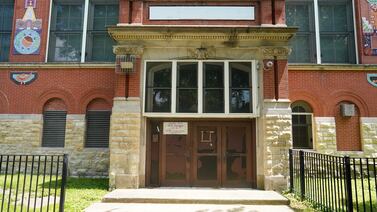New Jersey’s 1.6 million students will not return to classrooms this school year, Gov. Phil Murphy announced Monday, a momentous if widely expected response to the coronavirus pandemic that is sure to set back many students and put a huge strain on families and educators.
The decision to extend the statewide shutdown of all public and private school buildings, which began in mid-March, comes as nearly every other state has taken similar steps and a growing number of educators and parents expressed fears about reopening schools amid the ongoing pandemic.
The move means that students will have spent roughly a third of the school year learning from home — an unprecedented educational disruption that could impede the learning of thousands of students, especially the most vulnerable, including those with disabilities and limited technology at home. Statewide, roughly 90,000 students still do not have the home computers or internet necessary for virtual learning, according to state officials.
The shutdown’s aftershocks will ripple into the summer and fall as districts determine how to safely reopen school buildings while also addressing the learning disparities and social-emotional challenges sure to accumulate during the prolonged school closure.
“To every student, we want you to be safe, we want you to be healthy, we want you to continue your educational journey wherever it take you,” Murphy said. “To ensure all of these things, we have to take this step.”
The state education department will create a committee to explore summer learning options and the possibility of an extended school year for students with disabilities, Murphy said, adding that the committee will also consider how to safely reopen schools. The department also applied for $310 million in federal relief funds for schools, which would help districts pay for educational technology, meal distribution, summer programs, and mental-health services during the school closures.
Murphy had for weeks put off canceling in-person classes for the remainder of the school year even as more than 40 other states took that drastic step. But with New Jersey continuing to see hundreds of new coronavirus infections and deaths each day, pressure has mounted on Murphy to make the call. Last week, the state teachers union and groups representing school boards and parent associations urged Murphy to keep schools closed, citing the health risks of reopening too soon. And, on Friday, New York Gov. Andrew Cuomo said that state’s schools will not reopen this spring.
Now, the extended school closure will force districts to double down on virtual learning even as they begin planning for ways to catch up any students who fall behind, which could include expanding summer school, extending next school year, or providing intensive tutoring. Each option could present logistical challenges — such as navigating the work restrictions in teacher contracts — and added costs at a time when the state and many municipalities are warning of potentially dire budget cuts.
At the same time, districts are contemplating safety measures that may be necessary whenever school buildings reopen, such as half-full classrooms, staggered schedules, and mandatory facemasks. The teachers union in nearby New York City, which has been at the epicenter of the pandemic, has called for universal coronavirus testing, temperature checks at schoolhouse doors, and ramped up disinfecting when classrooms reopen this fall.
Districts must also come up with new ways to celebrate the class of 2020, who will miss out on graduation ceremonies and senior prom this spring. Options include virtual celebrations or gatherings held later this year under strict social distancing rules, state officials said Monday.
“We owe it to the seniors to give them a tip of the cap,” Murphy said.
For now, the cancellation of in-person classes will continue testing educators and families: Teachers must rely on video chats and online platforms to reach homebound students, while parents oversee their children’s learning amid the stress and economic strain wrought by the pandemic. Some parents are already exasperated by the logistics of remote learning, which can involve managing multiple children’s daily assignments along with glitchy videoconferencing tools and a never-ending stream of messages and emails from well-meaning teachers.
“I’ve totally given up; I’m done with it,” said Jaz West-Romero, who is supervising the learning of her four children in Newark schools while continuing to work for a law firm.
The challenges have been especially steep in districts such as Newark, where thousands of families lacked computers or reliable internet and many of the city’s more than 50,000 students depended on the multitude of services that schools provide beyond academics, from daily meals to counseling and health care.
Newark’s charter and traditional schools rushed to continue their operations remotely, distributing grab-and-go meals and giving out paper work packets even as they laid the groundwork for virtual learning, which entailed loaning out thousands of laptops and providing technology tutorials for families and teachers.
Despite those extraordinary efforts to keep students learning amid the disruptions, many educators are still bracing for a coronavirus slide — a regression in students’ skills and a widening of learning gaps between the most and least advantaged students that will only become fully apparent when students return to classrooms.
Tanya Maloney, a professor of teaching and learning at Montclair State University, said the decision to keep schools closed — while necessary to protect students and educators — will have far-reaching consequences.
Schools should plan to assess students’ skills when they return to determine how much they fell behind, she said. In light of the inevitable learning losses, districts may need to rethink their learning standards and what skills students must demonstrate in order to be promoted to the next grade, she added.
Students with plenty of family support and resources might do fine academically during remote learning, though all children are experiencing the psychic burden of “living in a 24-7 crisis,” Maloney said. But students with greater needs — including those with disabilities or without the technology or supervision to keep up with their studies from home — could suffer serious learning setbacks during the many months that schools are closed.
“Those needs are going to be exacerbated,” she said. “In one word, it’s heartbreaking.”




